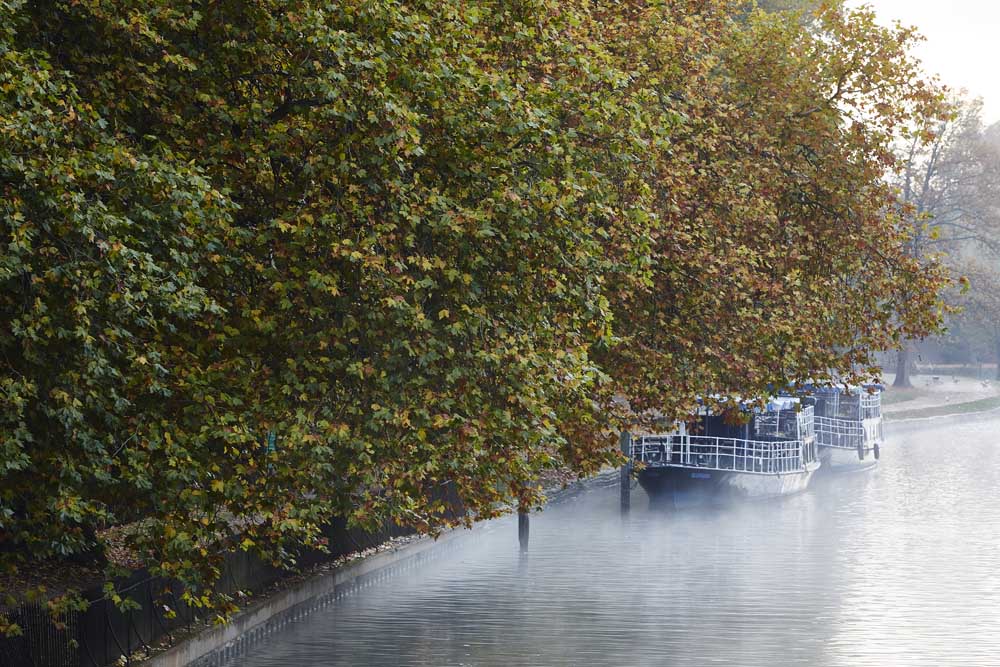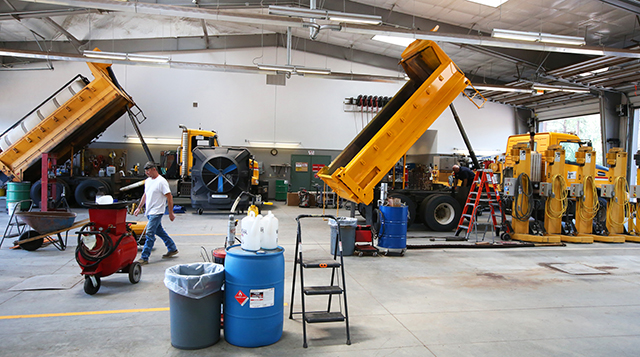Finding Alice’s ‘Wonderland’ in Oxford
Published 12:00 am Sunday, November 15, 2015

- Photos by Andy Haslam / The New York TimesCharles Lutwidge Dodgson, under the name Lewis Carroll, wrote “Alice’s Adventures in Wonderland and Through the Looking-Glass” 150 years ago, rooting it in the place he lived and worked: the city and environs of Oxford, England, on the River Thames, with its ancient university, its “dreaming spires” and its surrounding countryside.
Alice leaned back in the rowboat and watched flecks of blue flicker among the branches overhead. She heard the sound of the oars splashing in the water as the boat made its way up the Thames from Oxford, England, and of her sisters Lorina and Edith giggling, but mostly she heard Mr. Dodgson weaving a tale about another Alice, a little girl who had fallen down a rabbit hole and was now having a wonderful adventure in a wonderful land. When the girls returned to Oxford with Mr. Dodgson and his friend Robinson Duckworth on that July 4, 1862, Alice thought she would ask Mr. Dodgson to write the story down — it was one of his best.
Alice was Alice Liddell, the 10-year-old daughter of Henry George Liddell, the dean of Christ Church, the largest college of Oxford University. Mr. Dodgson was Charles Lutwidge Dodgson, a mathematics lecturer at Christ Church, a recently ordained deacon in the Church of England, a brilliant logician and a consummate storyteller.
Trending
He acceded to her request and over the next few months recorded the story in a manuscript he eventually illustrated and gave to Alice as a Christmas gift in 1864.
Encouraged by friends, including fantasy writer George MacDonald, he expanded the book, commissioned illustrations by political cartoonist John Tenniel and had it published at his own expense under the name Lewis Carroll. In the 150 years since the publication of “Alice’s Adventures in Wonderland,” it has influenced creations as varied as “Finnegans Wake” by James Joyce, illustrations by Salvador Dalí and a mock turtle soup from British chef Heston Blumenthal. The book and its author were remarkable: the one for its utter departure from moralistic children’s stories into a world of subversive nonsense, the other for talents as diverse as mathematics and logic, photography and poetry and an ability, nurtured in his childhood home of 11 siblings, to entertain and connect with children.
Roots of ‘Wonderland’
Fantastic as it was, “Wonderland” was rooted in the place Dodgson lived and worked: the city and environs of Oxford with its ancient university, its “dreaming spires” and its surrounding countryside. Oxford is a city teeming with tourists and traffic, whose shop windows, in the sesquicentennial year of “Wonderland,” overflow with Alice merchandise; but if one listens closely, if one ducks through stone arches, opens creaky oaken doors and descends to quiet riverside paths, one can still find the Oxford of Charles Dodgson and Alice.
I set out to discover that place, beginning with the college of Christ Church, where Dodgson lived from 1851 until his death in 1898 at age 65 and Alice lived from the time she was 3 until her marriage in 1880.
Visitors enter the college through the Meadows Buildings, erected by Henry Liddell, the dean, in 1862. Dodgson’s first rooms in the college were in the cloisters, and here I saw the great Norman doorway to the chapter house — now called the Queen Alice door after a similar doorway in Tenniel’s illustration of Queen Alice in “Through the Looking-Glass.”
Trending
After climbing a fan-vaulted staircase made famous in the “Harry Potter” films, I entered the Great Hall under the imposing portrait of Alice’s father. Dodgson wrote to a “child-friend” that he dined there “about 8,000 times.” He continues to survey it: Within the cavernous space with its paneled walls, stone mullioned windows and hammer-beam ceiling, Dodgson’s portrait hangs alongside those of other distinguished members of the college. High on the left wall, a stained-glass window depicts Dodgson and Alice Liddell. But I was drawn to the andirons in the grand fireplaces. Each of these brass beauties has a woman’s head perched atop an impossibly long neck — just the way Dodgson drew the 9-foot-tall Alice in his manuscript.
I made my way through waves of tourists from all over the world back down the staircase and through a stone archway into the sun-drenched Great Quadrangle, which, Dodgson quipped, “very vulgar people call Tom Quad (after the bell in Christopher Wren’s tower). You should always be polite, even when speaking to a Quadrangle.” Dodgson lived in rooms in the quad’s northwest corner from 1862 until his death: first in a ground-floor suite, where he wrote “Alice’s Adventures in Wonderland,” then in an upper suite looking over St. Aldate’s. Directly opposite his staircase, in the northeast corner of the quad, is the deanery, where Alice lived.
Spurring speculation
His thoughts must have drifted there often. Charles Dodgson and the Liddell family were close friends from the time he met the family in 1855 until 1863, when the relationship cooled — a change that has led to speculation and debate among scholars and novelists alike. He continued to see the family on occasion but the former intimacy (at times almost daily visits, games and stories) was gone. Dodgson, a bachelor who lived in college rooms for the rest of his life, went on to have scores of other child-friends, many with whom he remained on close terms after they reached adulthood. But he always remembered Alice, who inspired his greatest writings, with special fondness. Alice had three sons, two of whom were killed in action in World War I. She lived a largely quiet life until she offered the original manuscript of “Alice” at auction in 1928 and became known as “the original Alice.” As such she traveled to New York in 1932 to receive an honorary degree from Columbia University. She died in 1934.
Ducking from the brightness of Oxford’s largest quadrangle into the gloom of a narrow passage Dodgson once compared with a railway tunnel, I passed a sober reminder of Alice’s later life — her son Leopold Reginald Hargreaves, is listed on a memorial among the Christ Church dead of World War I. I emerged into the cathedral. Here, among vergers sharing bits of Christ Church history with groups of visitors, I found a possible inspiration for Dodgson’s pseudonym, Lewis Carroll. Dodgson created this moniker by Latinizing his names Charles Lutwidge to Carolus Ludovic, then reversing the order and de-Latinizing them to Lewis Carroll. As I studied the 1823 memorial in the north transept commemorating Charles Lewis Atterbury, whose Christian names in Latin on the stone tablet are rendered “Carolus Ludovicus,” I wondered whether this was the place that inspired Dodgson to play with Latin as he created his nom de plume.
Much of the cathedral’s stained glass is Victorian, and I basked in the vibrant colors and bold designs of several windows commissioned from William Morris’ design firm. At the east end of the south aisle is one of these: an 1878 Pre-Raphaelite-influenced window by Edward Burne-Jones depicting St. Catherine. The figure is based on Alice’s sister Edith, immortalized not only in stained glass but also as the Eaglet in “Alice in Wonderland.” Edith, who was 8 when Dodgson told the story, died in 1876 at 22. Her gravestone and those of her parents stand just outside this window.
I returned to the Great Quad through the tunnellike passage outside the cathedral’s west door and walked along the raised stone terrace on the east side of the quad, until I came to a Gothic paneled wooden door — one of many Oxford doors that hide private places. This is the entrance to Alice’s childhood home, to this day the residence of the dean of Christ Church and his family. The home is not open to the public, and the door, with its small plaque reading, “The Deanery — Private,” remained firmly shut. Dodgson first records meeting Alice in his diary on April 25, 1856, when he visited the deanery garden to take a picture of the cathedral. He soon turned his lens on the children who, he wrote, were “not patient sitters.” In the years that followed, Dodgson took scores of images of the Liddell children, showing remarkable artistic prowess at the complex and difficult wet-plate method of photography.
Some of those images were on display in the Upper Library of Christ Church, not generally open to the public, in an exhibition that included photographs of the Liddell family and a wet-plate camera set up and pointed out the window. A quick glance at the plate onto which the image was focused led to a revelation — all those thousands of photographs Dodgson took were composed upside down and backward. No wonder Dodgson set his sequel to “Wonderland” in a world behind the looking glass.
Dodgson was the sub-librarian of Christ Church from 1855 to 1857 and from his office could look directly into the deanery garden. From the top of the gracefully curving stairs, I had a similar view and could glimpse a wooden door set into a stone wall. This door leads from the deanery garden to the cathedral garden, and little Alice would generally have found it locked. It is no coincidence, then, that she spends much of her time in “Wonderland” trying to find her way into the “loveliest garden you ever saw.”
Re-creating the trip
Having found relics and architecture that so clearly inspired Dodgson, I decided to turn my attention to the excursion during which he invented the tale of “Alice.” So, three days later, my wife, daughter and I set out to row upstream from Folly Bridge to Port Meadow, re-creating the trip Dodgson, Duckworth and the Liddells took in 1862.
At Folly Bridge we, like Dodgson, rented a rowboat from Salter’s Steamers. For the less intrepid, Salter’s offers an Alice in Wonderland cruise that visits several places where Dodgson rowed with the Liddell children. Soon after leaving the bridge behind, we found ourselves on a peaceful stretch of river where trees overhung the banks and traffic was little more than a distant hum. Such stretches alternated with more urban landscape, but eventually we left Oxford behind, making our way through Osney Lock, as Dodgson and his party had done.
Rowing, I discovered, is a perfect metaphor for the way Dodgson composed his story. You can’t see where you’re going when you row, and only with the direction of my wife and daughter could I keep the boat heading in the right direction. So it was with Dodgson. As he wrote years later, he had begun by sending his “heroine straight down a rabbit-hole, to begin with, without the least idea what was to happen afterwards.” Only through the prodding and interruption of the children did the story move forward.
We arrived at Port Meadow, a vast open space used for grazing for about 4,000 years, graced today by geese, ducks and the occasional blue heron. Here Dodgson’s merry party landed with their picnic, and he went on with his story. After our own picnic, we pulled in at the Perch, a riverside pub opposite the meadow, for a trip to the tiny hamlet of Binsey. The walk from the riverside down a narrow country lane took about 20 minutes and led us to the isolated St. Margaret’s Church and its holy well.
According to legend, St. Frideswide founded a place of worship on the site of Christ Church around 700 A.D. and later fled Oxford to avoid an unwanted marriage. She eventually arrived in Binsey where she prayed to St. Margaret for fresh water, and a well sprang forth. In the Middle Ages, Binsey became a pilgrimage destination, and the well, said to have healing powers, became known as a “treacle well”; treacle being a medieval word for “healing liquid.” When the Dormouse tells Alice a story during the Mad Tea Party, he places three sisters (representing the three Liddells) at the bottom of a “treacle well.” Alice at first objects that, “There’s no such thing,” and then (no doubt thinking of Binsey) concedes that, “there may be one.”
On my last day in Oxford, I stood in the nave of St. Frideswide’s Church looking at a wooden door propped against the wall. Tradition holds that Alice, a talented artist, carved the top panel of the door in the 1880s for a church in London. Wartime bombing all but destroyed the church, and the door returned to Oxford. The panel depicts St. Frideswide, standing in a rowboat, returning downstream to Oxford from her exile in Binsey. When those halcyon summer days of Alice’s childhood were a distant memory, she chose to carve a young woman in a rowboat on the Thames, journeying toward immortality.








